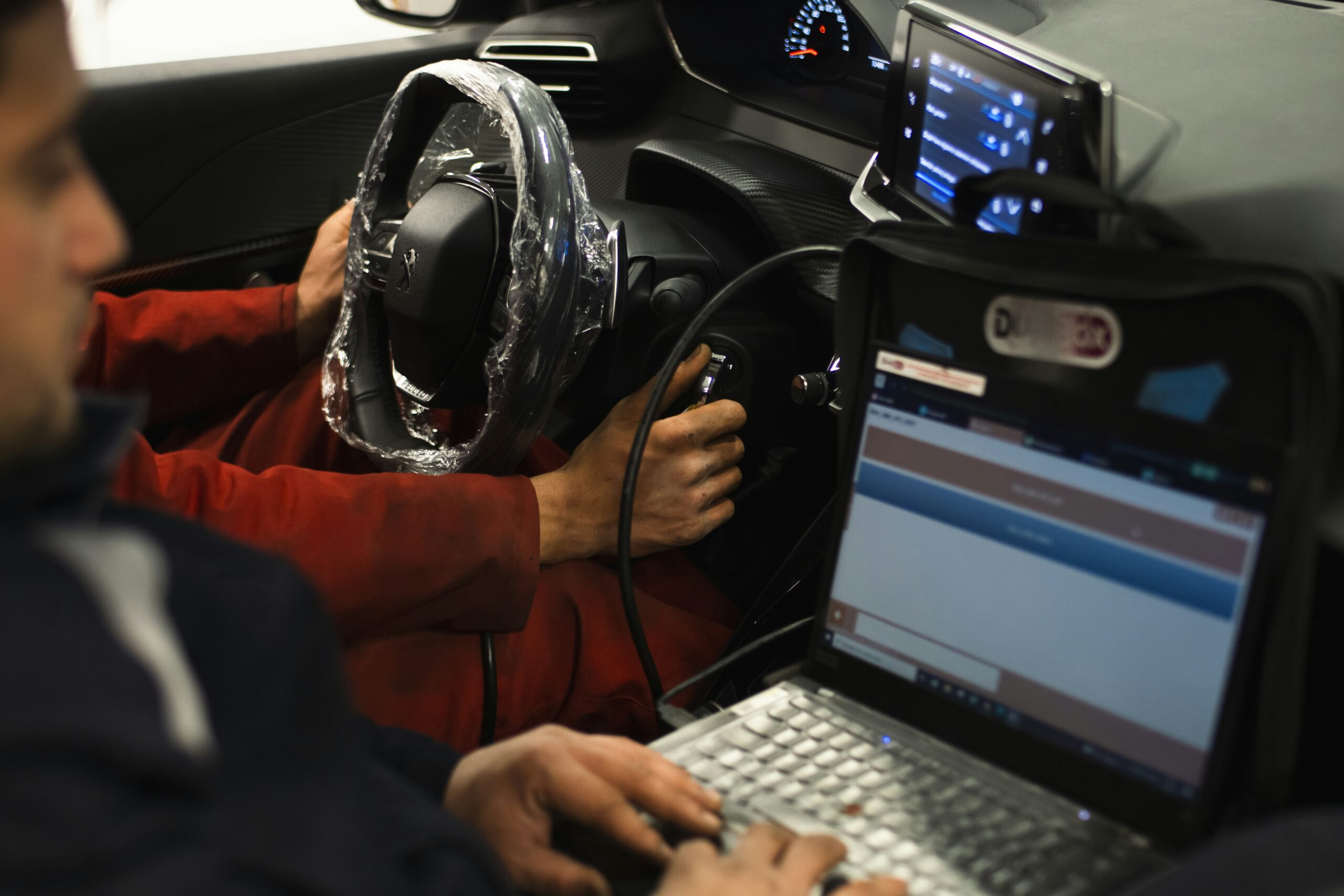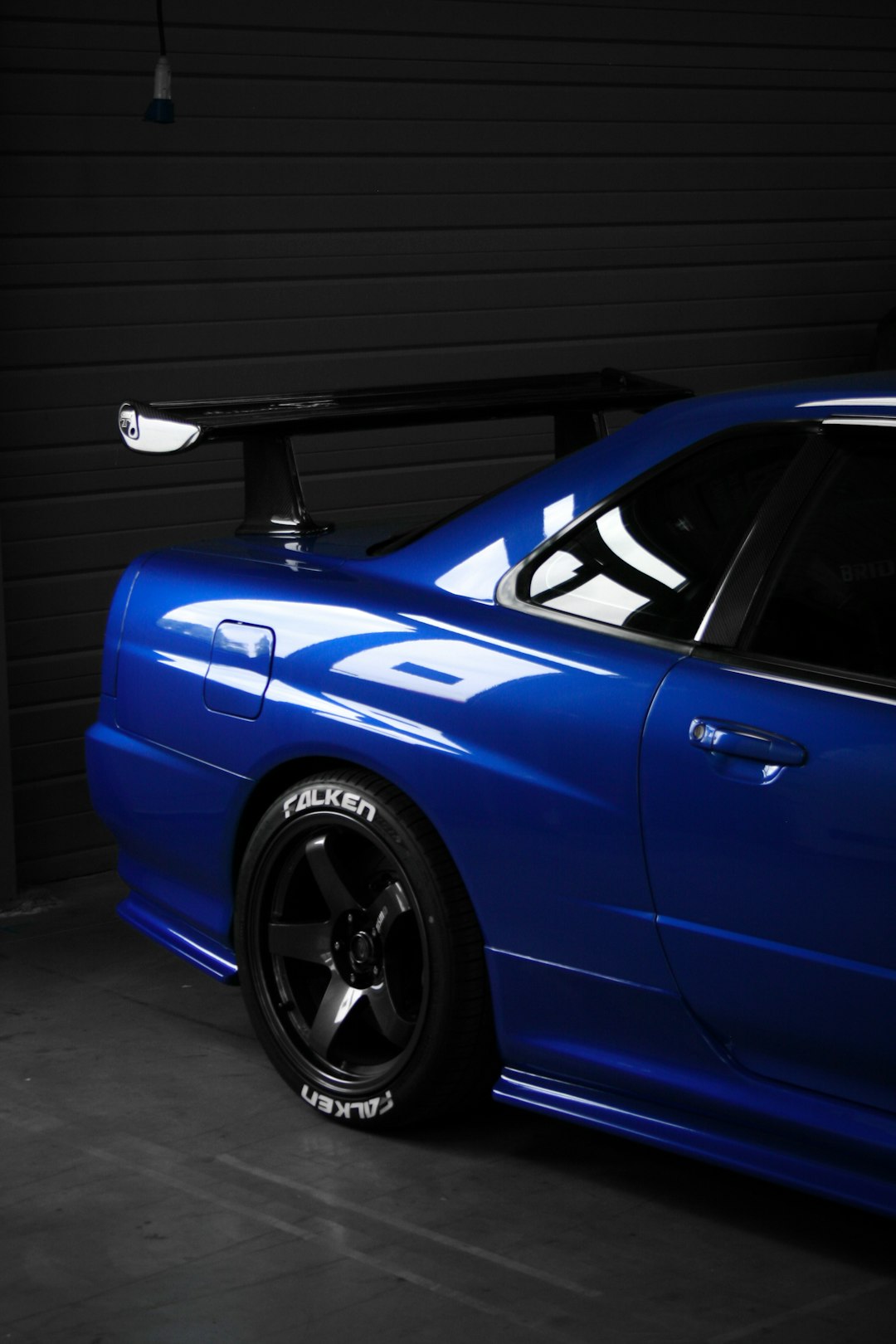The Ultimate Guide to Starting Car Tuning: From Novice to Pro
Car tuning presents an exhilarating venture for both seasoned and aspiring enthusiasts. In this guide to starting car tuning, we delve into the art and science of transforming stock vehicles into personalized powerhouses. The global automotive aftermarket, valued at $390 billion in 2021, underscores the sector’s economic significance, with projections reaching $600 billion by 2025. Tuning offers more than just enhanced performance; it improves fuel efficiency, aesthetics, and driving experience, making it a popular choice for 70% of car enthusiasts who engage in vehicle modifications.
This article serves as a comprehensive resource, covering car tuning basics like ECU tuning, which can boost horsepower and torque by 10-30%, to advanced practices including forced induction and suspension tuning. We’ll explore current trends like electrification and DIY tuning, utilizing tools like OBD-II scanners for accessible modifications.
Our guide promises valuable insights into the legal and technical aspects of tuning, ensuring readers make informed decisions. By the end, you’ll understand the nuances of performance, visual, and audio tuning, equipped with actionable tips and expert advice to elevate your tuning journey. Embark on this transformative path today, turning your automotive aspirations into reality.

Stock photo from Pexels Source: pexels
Understanding Car Tuning
Understanding Car Tuning
Car tuning is an integral part of automotive modification, allowing enthusiasts to customize their vehicles for enhanced performance, aesthetics, and sound. It involves modifying and optimizing various components to achieve specific goals. The ECU tuning is a cornerstone of modern tuning, offering significant performance gains. By reprogramming the Electronic Control Unit, enthusiasts can unlock increased horsepower and torque, often achieving improvements of 10-30% depending on the vehicle model and modifications.
Types of Car Tuning
Performance tuning focuses on enhancing the speed and handling of a vehicle. This includes upgrades like forced induction systems, such as turbochargers and superchargers, which can boost engine power output by 30-50%. Another critical aspect is suspension tuning, where components like coilovers and sway bars improve handling and ride quality, potentially reducing lap times significantly.
Visual tuning emphasizes the aesthetic appeal, involving modifications like body kits, custom paint jobs, and aftermarket wheels. Meanwhile, audio tuning aims to enhance the sound system, providing a richer auditory experience through upgraded speakers and subwoofers.
Essential Tools and Software
Starting car tuning requires specific tools and software. An OBD-II scanner is essential for diagnosing vehicle issues and monitoring performance changes. Software like HP Tuners and EcuTek are popular for ECU tuning, offering user-friendly interfaces that allow enthusiasts to tweak engine parameters.
-
Basic Tool Kit: Includes wrenches, screwdrivers, and pliers for mechanical work.
-
Rolling Road: A dynamometer tool for measuring vehicle performance under different conditions.
-
Performance Parts: Includes components like upgraded exhausts and air intakes, essential for performance tuning.
Actionable Tips for Beginners
For those new to car tuning, it’s crucial to start with research. Understand your vehicle’s specifications and any limitations. Setting a realistic budget is essential, as tuning can become costly quickly. Always document changes for future reference and maintenance. When unsure, seek advice from professional tuners to avoid costly mistakes.
As the tuning industry evolves, enthusiasts must stay informed about trends like electrification and eco-friendly modifications. By understanding these elements, enthusiasts can embark on a successful tuning journey, transforming their vehicles from stock to personalized machines that reflect their unique preferences and driving needs.

Photo by Alexandru Ivanov on unsplash
Getting Started with Car Tuning
Getting Started with Car Tuning
Embarking on a car tuning journey can be both exciting and rewarding. For novices, understanding car tuning basics is essential to avoid pitfalls and ensure a smooth start. One of the first areas to explore is the modification of air intake and exhaust systems. These changes can boost performance by improving airflow, potentially increasing horsepower and enhancing engine efficiency. For instance, replacing the stock air filter with a high-performance alternative allows for better air intake, which is crucial for combustion efficiency.
The Electronic Control Unit (ECU) plays a pivotal role in modern car tuning. It governs various engine parameters, and ECU tuning can lead to significant performance improvements. By adjusting ECU settings, enthusiasts can optimize fuel mixture, ignition timing, and boost pressure in turbocharged engines. This process, also known as remapping, can result in a 10-30% increase in horsepower and torque, depending on the vehicle and modifications. Learning to read and interpret ECU data is a valuable skill for any budding tuner. Tools like OBD-II scanners can connect to the car’s ECU, providing real-time data and diagnostic capabilities.
Safety and Legal Considerations
Before diving into performance tuning, it’s crucial to consider safety and legal aspects. Not all modifications are street-legal, and some may void warranties or insurance policies. Therefore, understanding local regulations is paramount. For example, while forced induction upgrades like turbochargers can significantly boost power, they may also lead to emissions non-compliance if not properly managed. Always ensure that any performance parts used comply with local emissions standards.
Furthermore, safety should never be compromised. Upgrading suspension components, such as coilovers or sway bars, can improve handling and ride quality, enhancing overall vehicle safety. However, improper installation can lead to adverse effects, so it’s advisable to seek professional assistance when needed. Joining enthusiast forums and communities can offer valuable insights and recommendations from experienced tuners.
Exploring Visual and Audio Tuning
While performance tuning focuses on enhancing speed and handling, visual tuning allows for personalization and aesthetic enhancements. This includes custom paint jobs, body kits, and wheel upgrades. Visual tuning not only improves a vehicle’s appearance but can also increase its resale value. On the other hand, audio tuning is about improving the car’s sound system, offering a richer auditory experience. Upgrading speakers and amplifiers can transform the in-car audio environment.
For those starting, it’s wise to set a budget. Tuning can become an expensive hobby, and prioritizing modifications is essential. Begin with cost-effective changes like air intakes and exhausts, gradually progressing to more complex upgrades like ECU remapping and suspension tuning. Documenting each modification is beneficial for tracking performance changes and maintaining a service history, which is crucial for future upgrades or resale.
Actionable Tips for Novice Tuners
-
Research Thoroughly: Understand your vehicle’s specifications and limitations before making modifications.
-
Start Small: Begin with simple upgrades and gradually move to more complex tuning tasks.
-
Consult Professionals: When in doubt, seek advice from professional tuners to avoid costly mistakes.
-
Engage with the Community: Participate in forums and local car clubs for support and advice.
In conclusion, starting a car tuning journey requires careful planning and consideration. By focusing on both performance and aesthetic modifications, understanding the role of the ECU, and adhering to safety and legal guidelines, enthusiasts can transform their vehicles into personalized, high-performance machines.
Advanced Car Tuning Techniques
Understanding Forced Induction Systems
Forced induction is a powerful technique to boost engine performance by increasing the amount of air entering the engine. This includes turbochargers and superchargers, both of which can significantly increase power output. Turbochargers use exhaust gases to spin a turbine, compressing air into the engine, while superchargers are mechanically driven by the engine’s crankshaft. For instance, a turbocharger can enhance engine power by 30-50%. When adding forced induction to your vehicle, ensure that the engine components can handle the increased pressure and heat. Proper cooling systems and upgraded internals like forged pistons may be necessary to handle these enhancements.
Optimizing Suspension Tuning for Performance
Suspension tuning is critical for improving handling and ride quality, enhancing both performance and comfort. Key components include coilovers, sway bars, and bushings. Coilovers allow fine-tuning of ride height and damping, offering better control over the vehicle’s dynamics. Sway bars reduce body roll during cornering, improving stability. Upgrading these components can lead to significant improvements on the track, with lap times potentially reduced by up to 5 seconds. Always consider the balance between performance and comfort, as overly stiff setups can be uncomfortable for daily driving.

Photo by Mehmet Talha Onuk on unsplash
Advanced ECU Mapping Techniques
ECU tuning, or remapping, involves modifying the software that controls engine parameters like air-fuel ratio, ignition timing, and boost pressure. Advanced tuners use specialized software such as HP Tuners or EcuTek to adjust these settings for optimal performance. ECU tuning can result in horsepower and torque gains of 10-30%, depending on the vehicle and modifications. However, improper tuning can lead to engine damage, making it crucial to understand your vehicle’s capabilities and limitations. Real-time data logging and analysis are essential for successful ECU mapping, allowing tuners to make informed adjustments based on performance metrics.
Actionable Tips for Advanced Tuners
-
Understand Your Vehicle: Before implementing advanced techniques, thoroughly research your car’s specifications and limitations.
-
Invest in Quality Parts: Use high-quality performance parts to ensure reliability and longevity of modifications.
-
Professional Calibration: Consider professional calibration services to fine-tune ECU settings, especially after significant modifications.
-
Document Every Change: Keep a detailed log of all modifications and settings for future reference and troubleshooting.
For those serious about car tuning, investing in a rolling road or dyno session can provide valuable insights into your vehicle’s performance. This allows for precise measurement of power output, ensuring that modifications are delivering expected results. Additionally, many ECU tuning software platforms offer community forums where tuners share best practices and troubleshooting tips, a valuable resource for both novices and advanced users.
Real-World Example: Tuning in Action
Consider a case where a 2018 Ford Mustang GT undergoes significant tuning. By adding a turbocharger and upgrading the ECU, the vehicle achieved a 20% increase in horsepower and torque. To handle the increased power, the owner also upgraded the suspension with adjustable coilovers, enhancing both performance and comfort. This transformation highlights the potential of combining forced induction with suspension tuning and ECU mapping, resulting in a balanced and powerful vehicle.
Balancing Performance and Practicality
While advanced tuning techniques offer significant performance gains, it’s crucial to balance these with practicality. Daily drivers require a setup that maintains comfort and reliability, while track-focused vehicles can push the limits of performance. Understanding your goals and using a methodical approach will ensure that your tuning efforts yield the desired results without compromising vehicle integrity. Furthermore, adhering to local emissions and safety regulations is essential to ensure that modifications remain legal and insurable.
As tuning technology continues to evolve, enthusiasts can look forward to more sophisticated tools and techniques. The future promises even greater customization options, allowing tuners to tailor their vehicles precisely to their preferences. By mastering advanced car tuning techniques, you can transform your vehicle into a high-performance machine, perfectly suited to your driving style and needs.

Photo by Jacob Jensen on unsplash
Frequently Asked Questions
What is car tuning?
Car tuning involves modifying a vehicle’s performance or appearance. This can range from simple aesthetic changes to complex engine upgrades. Enthusiasts often use performance parts and techniques like ECU tuning and forced induction to enhance performance.
How do I start with car tuning?
Begin by researching your vehicle’s specifications and set a realistic budget. Prioritize modifications, starting with basic upgrades like air filters or exhaust systems before moving to complex mods like turbochargers. Consider consulting professionals, especially for intricate tasks.
What is a Rolling Road?
A Rolling Road is a tool used to measure a car’s power output. It simulates road conditions, allowing tuners to test and adjust engine performance accurately. This is essential for achieving optimal tuning results.
Is car tuning legal?
Many tuning modifications are legal if they comply with local emissions and safety standards. Always check regulations in your area before proceeding to avoid legal issues. Proper tuning ensures compliance while maintaining performance enhancements.
What are common myths about car tuning?
-
Myth: Tuning is only for racing. Fact: Tuning enhances daily driving by improving efficiency and comfort.
-
Myth: Tuning always damages the engine. Fact: When done correctly, tuning can safely enhance performance without harm.
What are the benefits and drawbacks of tuning?
Benefits include improved performance, handling, and aesthetics. However, tuning can lead to potential engine damage if improperly executed, legal issues with emissions, and possible insurance complications.
How is technology changing car tuning?
Technology integration, such as smartphone apps, allows real-time vehicle monitoring and adjustments. This evolution makes tuning more accessible and personalized, enhancing the overall tuning experience.
Conclusion
Car tuning is a multifaceted journey, providing enthusiasts the chance to enhance their vehicles’ performance, aesthetics, and sound. By understanding car tuning basics and exploring various tuning types like ECU tuning, performance tuning, and visual tuning, enthusiasts can transform their cars with precision. Embrace forced induction and suspension tuning for optimal results. Document changes, seek professional advice, and continuously learn. Start with this guide to starting car tuning to embark on an exciting journey. Share your experiences, explore performance parts, and visit a Rolling Road to fine-tune modifications. Dive in, and let the adventure begin!




Add your first comment to this post